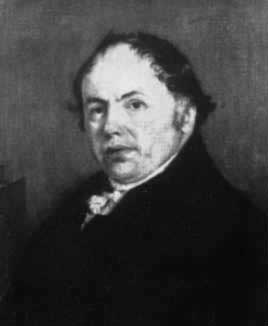<Back to Index>
- Mathematician William Wallace, 1768
- Painter František Kupka, 1871
- Great Khan of the Mongol Empire Kublai, 1215
PAGE SPONSOR

William Wallace (September 23, 1768, Dysart — April 28, 1843, Edinburgh) was a Scottish mathematician.
Wallace was born at Dysart in Fife, where he received his school education. In 1784 his family moved to Edinburgh, where he himself was set to learn the trade of a bookbinder; but his taste for mathematics had already developed itself, and he made such use of his leisure hours that before the completion of his apprenticeship he had made considerable acquirements in geometry, algebra and astronomy. He was further assisted in his studies by John Robison (1739 - 1805) and John Playfair, to whom his abilities had become known. After various changes of situation, dictated mainly by a desire to gain time for study, he became assistant teacher of mathematics in the academy of Perth in 1794, and this post he exchanged in 1803 for a mathematical mastership in the Royal Military College at Great Marlow (afterwards at Sandhurst with a recommendation by Playfair). In 1819 he was chosen to succeed John Leslie (or John Playfair(?)) in the chair of mathematics at Edinburgh. He developed a reputation for being an excellent teacher. Among his students was Mary Somerville. In 1838 he retired from the university due to ill health.
In his earlier years Wallace was an occasional contributor to Leybourne's Mathematical Repository and the Gentleman's Mathematical Companion. Between 1801 and 1810 he contributed articles on “Algebra,” “Conic Sections,” “Trigonometry,” and several others in mathematical and physical science to the fourth edition of the Encyclopaedia Britannica, and some of these were retained in subsequent editions from the fifth to the eighth inclusive. He was also the author of the principal mathematical articles in the Edinburgh Encyclopaedia, edited by David Brewster (1808 - 1830). He also contributed many important papers to the Transactions of the Royal Society of Edinburgh.
He mainly worked in the field of geometry and in 1799 became the first to publish the concept of the Simson line, which erroneously was attributed to Robert Simson. In 1807 he proved a result about polygons with an equal area, that later became known as the Bolyai – Gerwien theorem. His most important contribution to British mathematics however was, that he was one of the first mathematicians introducing and promoting the advancement of calculus in continental Europe to Britain.